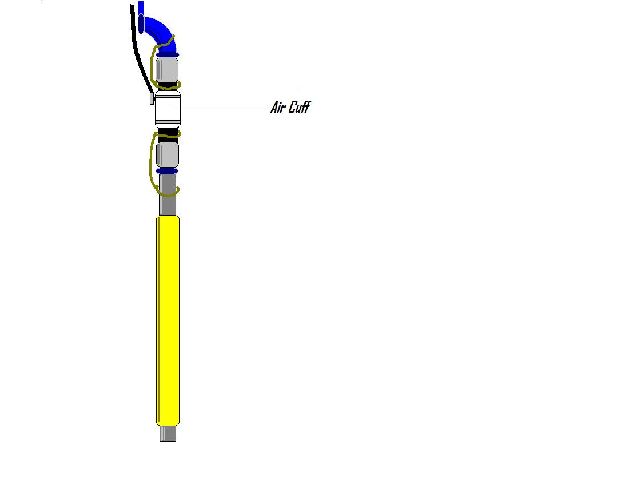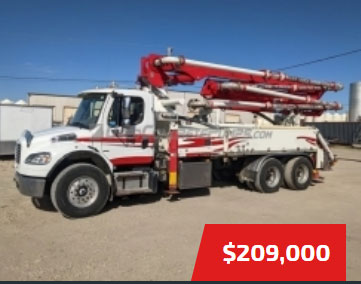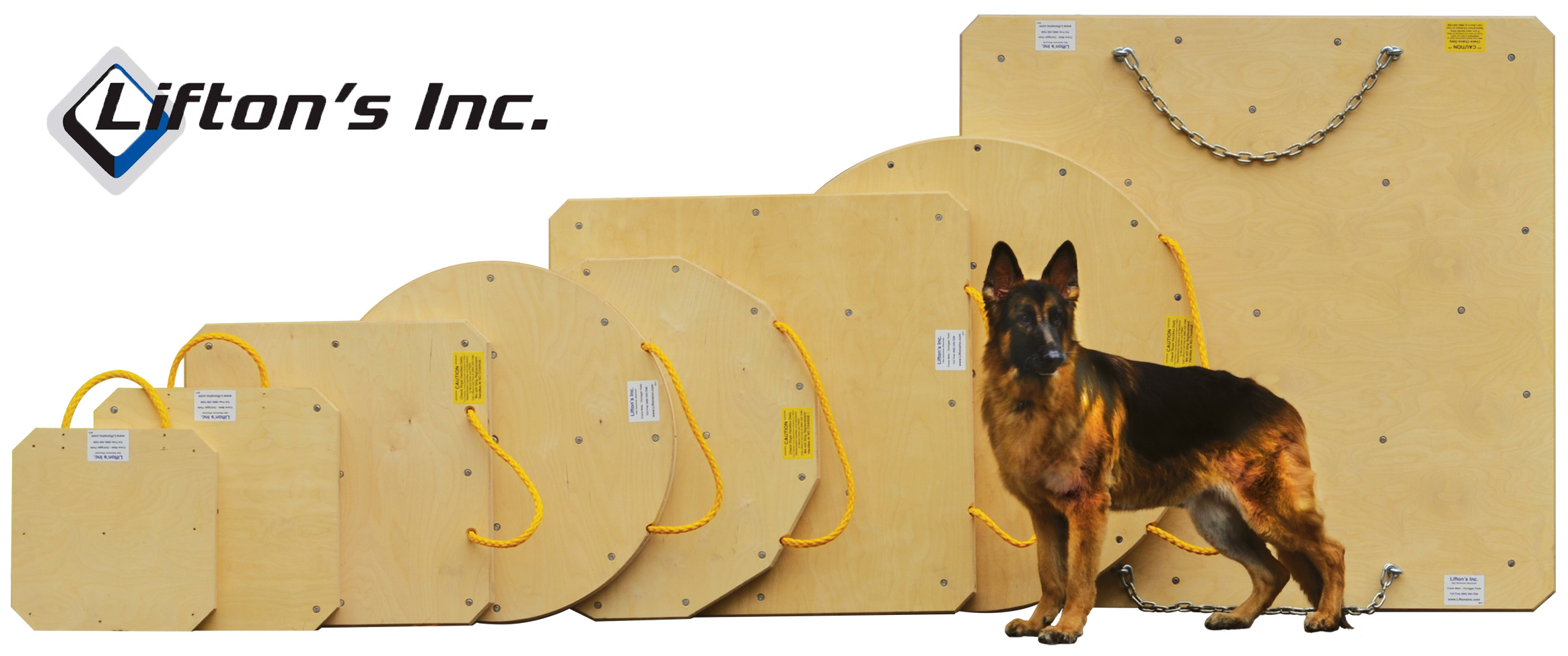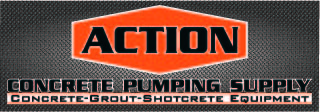| TooTall | 03-05-2009 | comment profile send pm notify |
|
Not long ago I was on a job that required a 20' tremme but I did'nt have one. I found an 18foot piece of 4" drain pipe and sleeved it over my 3" whip hose. It worked good and got the job done. When we finished I cut the end of the make shift tremme off so it was flush with the end of the whip hose. I realized that I had also made myself an anti whip hose that worked exactly like the ones that Putzmiester sell Check it out...
I did'nt know there was such a thing as an "anti whip device" until I read Rob Edwards recent statement. This looks like it might work a little better than a "boxing glove"? |
||
| Bob | 03-05-2009 | reply profile send pm notify |
|
OKAY. Now take that idea to its most basis form; the starting place. I would love for someone/anyone to tell me why in the hell we use a hose as the discharge vehicle in a suspended application. If, as seems necessary, we must modify this hose to a condition of rigidity, why not just use a pipe? It costs one hell of a lot less than a hose and you all ready own it. OH, it is too hard? Put a piece of foam around it. Since it cannot whip, the only danger is your booming into the hose man. As far as the ability to push it around, a 4 foot over all length boom hose clamped to your tip elbows covers that. And finally, if you have ever pushed a hose around all day you know that the weight is an issue; a pipe of the same length weighs less. WELL? ;~) we have always done it that way is not an acceptable answer |
||
| TooTall | 03-05-2009 | reply profile send pm notify |
|
Here comes the silly answers... It's too hard to fold the boom up with a pipe on the end of it. It's too heavy and I cant figure out how to clamp it up! Someone would eventually chain it up like we chain up reducers to get that extra few feet, so they could get an extra 20 feet of reach! I cant clamp my double 90 "S"bend on to the pipe. If we can use pipe why cant we use DE hoses? I cant reach the reducer to beat on it when I plug up! It wont stay in the whip trap when I fold up. Have you ever tried to kink off a pipe?......................
This my be your best pipe dream ever Bob! If you're tell'n me I can hang a rubber coated pipe just wait to see tomorrows pix! What will we call these discharge pipes?... "I dont use a whip anymore, I use a "club" |
||
| Bob | 03-06-2009 | reply profile send pm notify |
|
Yes, all non valid and rather silly & ill-thought reasons to not use this system It's too hard to fold the boom up with a pipe on the end of it. It is if anything easier to saddle a pipe verses a hose It's too heavy and I cant figure out how to clamp it up! Please ask for your old job back at Burger King Someone would eventually chain it up like we chain up reducers to get that extra few feet, so they could get an extra 20 feet of reach! There are people that fold up the outriggers with the boom up in the air. Sorry, pipe use will not raise IQ I cant clamp my double 90 "S"bend on to the pipe. Thank you for that extra reason to use the pipe / since it cannot whip using the S-bend MAY be safe further study needed If we can use pipe why cant we use DE hoses? Hoses flex – pipe does not I cant reach the reducer to beat on it when I plug up! Situate the pipe at an angle and pound away It wont stay in the whip trap when I fold up. Gravity is a constant, even with the pipe; it doesn’t fall out Why build a rigid pipe around an otherwise flexible hose? It is just extra weight on the boom and serves no purpose. |
||
| cp1 | 03-06-2009 | reply profile send pm notify |
|
I've always thought that the reason those anti-whip devices never took off was because everyone realizes the amount of minor injuries such as sprains and breaks would increase dramatically. A rigid discharge would mean people cannot push it. People would be falling off walls, falling down, and standing solid when a steel pipe hits them because of an operator mistake. And as far as anti-whipping, you still have the swiveling double 90 above you, so that motion isn't stopped. With a good air pocket, instead of a hose jumping around, you have a steel pipe jumping back and forth. I've looked into ways to let the air escape between the 2nd and 3rd without letting concrete escape, but cannot figure it out. If operators had more ability to problem solve, I think the proper solution would be to have a sensor in the hopper which shuts the pump off when the concrete level is below the shaft of the valve. But these would obviously break sometimes and the pump would be dead in the water. |
||
| Bob | 03-06-2009 | reply profile send pm notify |
|
A rigid discharge would mean people cannot push it. That is not the case. It is easier to push than a standard tip hose |
||
| TooTall | 03-06-2009 | reply profile send pm notify |
|
Bob, Those silly answers were not from me, they were examples of what you might hear from others. The ones that say "that's the way we've always done it". I'm all for new ideas, if nothing ever changed and we kept doing things the way they've always been done we would all be wheel barrow operators. cp1, A Putzmiester anti-whip hose is not totally rigid, the first 18" below the metal end flexes just like a regular hose which allows it to swing. They DO signifigantly reduce the voilence when you have an air pocket. Simply shutting off the pump does'nt do anything to relieve air pressure that is trapped in the delivery system. Reversing the pump will blow concrete in the face of the mixer driver. I think the best way to deal with entrapped air is to constantly be aware of what's happening in your machine. There are (2) tell tale signs of when a pump has swallowed some air. You can tell when there's air in the system when you can no longer hear the sound of the concrete stroking through the pipe. You can also tell by watching the flow out of the tip hose, When there's a pause and it seems like you have missed a stroke is another sign that air is in the system. When no one knows it's coming is when it's most dangerous! |
||
| cp1 | 03-06-2009 | reply profile send pm notify |
|
Having a system that shuts the pump off when the concrete level in the hopper is too low would prevent air from getting in the system to begin with, not shut the pump off when air is trapped inside. Unless the air is the result of a chemical reaction within the concrete which is creating gases, I think this would prevent many problems. |
||
| Bob | 03-06-2009 | reply profile send pm notify |
|
Bob, Those silly answers were not from me, I know that. I answered them for some meathead that thought they were real. The flow of the concrete will speed-up as the air gets closer to the discharge point. If you are pumping along and the crete speed increases warn the crew and slow down or stop the pump. There is a great safety bulletin from the ACPA on this subject. It is worth reading and reading again. |
||
| Toby | 03-06-2009 | reply profile send pm notify |
|
I think I will try it out. |
||
| Bob | 03-06-2009 | reply profile send pm notify |
|
Toby, It is VERY important that the hose that you use is clamped to the tip 90s and is secured with a safety strap. One strap for every suspended item. It is very important that the hose that you use is between 3 feet and 4 feet over all length. At that length there is plenty of flexibility for the hose man to push it here and there but not so much as to snake around if it were to plug somewhere. You MUST not drop it, while pumping or otherwise, on anyone’s foot. The same is true of a hose but pay attention. Here is a link for a place that will sell you padding for the pipe. I strongly suggest that you do put some type of padding on it. If you have any questions, please feel free to call or email Bob ;~) (770) 403-1444 Link to pipe padding: http://www.thefoamfactory.com/childsafety/childsafety.html |
||
| murf | 03-07-2009 | reply profile send pm notify |
|
cp1 Putzmeister already fit level sensors in the hopper if you require them, on a stony/course mix they do nothing to stop air in the system, the pump will suck air through the mix |
||
| TooTall | 03-07-2009 | reply profile send pm notify |
|
Toby like this... |
||
| Bob | 03-07-2009 | reply profile send pm notify |
|
JEWGOTIT MANG |
||
| Jedidiah | 03-07-2009 | reply profile send pm notify |
|
This might help for the dribble...
|
||
| Bob | 03-07-2009 | reply profile send pm notify |
|
The advent of the Air Cuff is what makes this system possible. Years gone by, this was a workable program. We had "BASKETS" and stub hoses on the end of the boom, not 90s. It was no big deal to pour with a pipe. Commercial walls would be done with the wall pipe and lots of hose men liked the idea that they were light and easy to push. It migrated to other types of pours. As we [the industry] got older and smarter we no longer slopped concrete from one column to the other; it was officially - not cool. So everyone started using the sorriest rag-ass hose that they could find to use as a tip hose [easy to kink and tie up for a move]. Then the S-tube and the Rock valve showed up on the scene; two systems that were capable of being air compressors [unlike our old leaky valves of days gone by]. So we have gotten to where we are today; still tying up rag-ass tiphoses on the end of our air compressors***** and guess who is responsible for the damage that we cause? Thats right Kids, WE ARE!!! We find ourselves at the point of being caught between the cost of changing all of our tip hoses to the Putz anti-whip hose (good product) or the cost of the court room for staying with our rag-ass hoses. It is not possible that I am the only person to see how stupid it is to remain where we are today. I am throwing out an idea for change. If you have a better idea GOOD... LETS SEE IT. The way I look at things I am probably smarter than 50% of you - and dumber than 50% of you. How about you guys in the upper 50% directing a little of that spare brain power to making a safer system for the tips of our boom pumps. Something everyone can afford, something that will keep us from hurting our co-workers, something that will keep us out of court and put an end to hose whipping FOR GOOD and believe me, it would be good ;~) |
||
| Bob | 03-07-2009 | reply profile send pm notify |
|
Ps: Just because you are using this pipe system or pouring right out the end of the deck pipe doesn’t mean that the violent blast of rocks, sand, crete and air are at an end. That is the other problem; or more correctly the proximate problem. Until such time as the manufacturers of our concrete pumps devise a means of ending these violent killer blasts of compressed air; you as an operator must continue to be vigilant in watching out for them and doing all that you can to see that the damage and ill effect are mitigated to the best of your ability. Warn all ready mix drivers. Explain what can and may happen if the hopper is allowed to suck air. Keep all personnel AWAY from tip while priming, after waiting, after moving, after breaking off system, while and after working out a small blockage or at any time you feel there is a possibility of air being in the system. This “time of danger†continues until there is CONCRETE flowing steadily from the end of the discharge end of the system. Only then is it safe for anyone to approach the discharge end of the placing system. YOU HAVE A DUTY TO WARN. DO YOUR DUTY! |
||
| murf | 03-08-2009 | reply profile send pm notify |
|
we have anti whip hoses and hopper sensors etc etc , surely the answer lies in whats in the pipe? Not being an electrical whizz, the technical side eludes me but possibly we could measure the density of the mix traveling up the tube and pick out the air pockets before they reach the end of the line, then send out either an alarm or relay it back to the pump and the speed control on the system. Such a devise wants to be made into a portable box that fits round a 3/4/5" line????????? |
||
| TooTall | 03-10-2009 | reply profile send pm notify |
|
The "alarm" that tells us there's an air pocket in the system is when the flow begins to increase and turning the pump off greatly reduces its effect! The anti whip hose is not completley rigid, it swings enough to place concrete but does'nt allow it to "whip" the crap out of someone!... |
||
























.jpg)
.gif)

.jpg)









.jpg)








